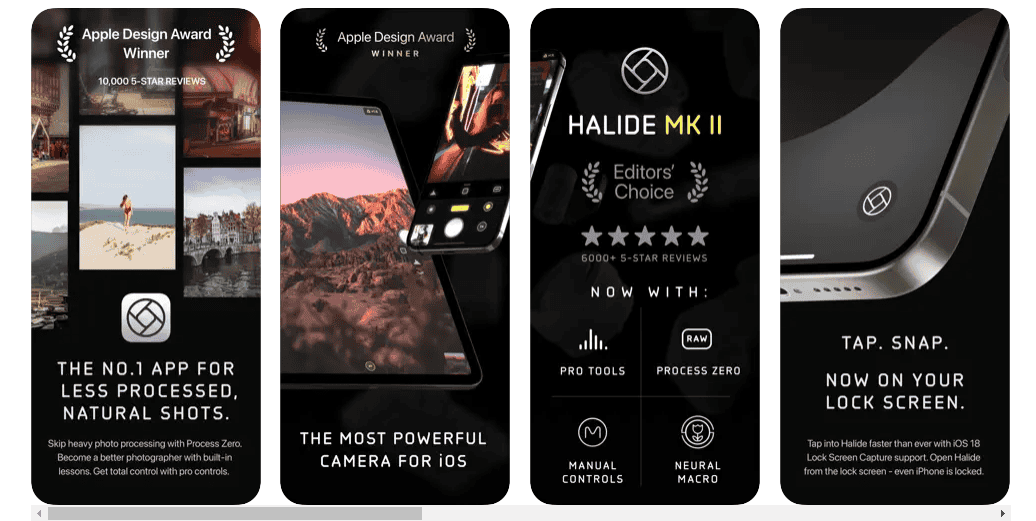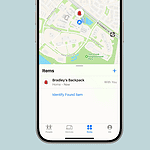A somewhat comical story has been making the rounds on social media about the popular camera app Halide being denied an an update on the App Store for not properly explaning why the App needed access to the camera on your phone. Well…Halide is quite literally an app that pitches itself a camera app for iPhone and iPad that offers professional-grade features for taking photos. So the review team over at Apple couldn’t piece together why a camera app for taking pictures would need access to the camera.

According to reports Lux (the developer) stated that they needed access to the camera because:
The camera will be used to take photographs
Which seems to clearly explain the app but maybe the review team didn’t see it that way. The incident brought attention to Apple’s strict privacy policies and the challenges developers face when trying to get their apps approved; and a lot of developers are coming out to speak up against the whole process. Although the issue was eventually resolved, it sparked a discussion about balancing innovation and user privacy in the app world. Clearer guidelines and more communication from Apple would help developers meet expectations and improve the user experience by providing transparent reasons for permission requests. Moving forward, collaboration between developers and platforms like Apple will be crucial to creating a stronger app ecosystem.
App Store Scrutiny: Halide’s Brush with Rejection
The Incident
Recently, the well-regarded third-party camera app, Halide, faced a temporary setback when it was denied an update on the App Store. The reason? Apple’s review process flagged the app for not adequately explaining why it required camera access.
The Irony
The situation sparked a degree of irony, as Halide is specifically designed to enhance the iPhone’s camera capabilities. Ben Sandofsky, the app’s developer, took to social media to express his surprise and frustration, highlighting the unusual scenario of a camera app needing to justify its use of the camera.

Resolution and Implications
Thankfully, the issue was promptly addressed, and the latest version of Halide is now available on the App Store. However, the incident serves as a reminder of Apple’s stringent app review process, even for established and reputable developers.
Apple’s Stance on Privacy
Apple has long championed user privacy, and this incident showcases their commitment to ensuring apps transparently communicate their data usage. The App Store’s guidelines require developers to provide clear and concise explanations for why their apps need access to certain device features, including the camera.
Balancing Innovation and Privacy
While Apple’s focus on privacy is commendable, it’s crucial to strike a balance that doesn’t stifle innovation. Developers like those behind Halide are pushing the boundaries of what’s possible with iPhone photography, and it’s important that the review process doesn’t inadvertently hinder such advancements.
Table: Key Takeaways from the Halide Incident
| Point | Description |
|---|---|
| App Store Scrutiny | Even popular and established apps are subject to rigorous review. |
| Privacy Focus | Apple prioritizes user privacy and requires clear explanations for data usage. |
| Transparency is Key | Developers must clearly communicate why their apps need access to device features. |
| Balancing Act | Striking a balance between privacy and innovation is crucial for a thriving app ecosystem. |
| User Empowerment | Users should be informed about app permissions and make conscious choices about data sharing. |
Short Summary:
- Halide’s update was rejected over unclear camera permission explanations.
- Developers find Apple’s requirements for permission prompts ambiguous.
- Calls for clearer guidelines on app permission requests are growing.
In a surprising decision, Apple has rejected a highly anticipated update to the popular photography app, Halide, due to concerns over the clarity of the app’s permission prompts for accessing the camera. According to Ben Sandofsky, co-founder of Lux (the company behind Halide), the rejection stems from an overly meticulous review process that focuses on the explanations provided for requesting camera access. This incident has sparked frustration among developers who have faced similar challenges. Apple’s guideline 5.1.1 mandates that any app requesting access to sensitive features like a camera or a photo library must provide explicit explanations for the request. However, many developers, including Sandofsky, argue that the requirements are vague and often subject to arbitrary interpretations by the review staff.
“After seven years of processing updates without issue, it seems one random reviewer decided that our permission prompt wasn’t descriptive enough,” Sandofsky shared on Mastodon. “I don’t know how to explain why a camera app needs camera permissions.”
The rejection has left many in the developer community scratching their heads. In his post, Sandofsky suggested that Apple’s expectations can be perplexing, considering the fundamental nature of a photography app. He humorously proposed an alternate text for the permission prompt that sacrificed grammatical integrity for clarity: “The camera will be used to take photographs for the app that you just downloaded to take photographs for.”
Furthermore, this isn’t an isolated incident. Other developers have voiced similar frustrations regarding their apps being rejected under guideline 5.1.1. One developer, who asked to remain anonymous, mentioned their app was rejected because the permission modal lacked sufficient clarity in its explanation of why access to the camera and photo library was necessary.
“We noted that your app requests the user’s consent to access their camera and photos but does not clarify the use of this feature in the permission modal alert,” Apple’s review team stated in the rejection notice.
In the developer’s original permission modal, the notification read: “AppName would like to access your camera to post photos.” This was deemed too vague by the reviewers, which showcases a growing trend where even straightforward permission requests can be met with scrutiny.
The permission request process for iOS apps typically involves a user’s interaction with an alert when they attempt to use features like the camera. For instance, an action sheet may provide options for users to add pictures, which subsequently triggers the permission alert. The expected standard alert title is usually something along the lines of: “[AppName] Would Like to Access the Camera.”
However, the message underneath, known as the “Purpose String,” appears to be where the crux of the issue lies. Despite numerous attempts to clarify the purpose of using the camera within their apps, developers have repeatedly faced rejections as Apple continues to demand more detailed descriptions.
In another case, a developer explained their Situation: “I have looked at many popular apps on the App Store, and their text is minimal compared to mine. What am I missing?” The text they submitted for permission read: “AppName lets you choose which photos you want to upload. Only photos you choose will be uploaded and shared,” yet it was still rejected.
Reactions from the developer community suggest a need for Apple to provide clearer, more structured guidelines regarding permission requests. As one developer pointed out, “Review staff explain that they cannot help with features or concepts,” which only adds to the frustration felt across the board.
In light of these recurring challenges, voices within the tech community are advocating for a review of Apple’s App Store review policies, particularly concerning permission requests. The criticism emphasizes the importance of collaboration and dialogue between developers and Apple, suggesting that more direct communication could prevent misunderstandings and unnecessary rejections in the future.
The issue is particularly poignant as Halide has recently received recognition, having been featured during the iPhone 16 keynote. This level of visibility makes the rejection all the more surprising, as it highlights the discrepancy between the app’s prestigious standing and the rigorous scrutiny it faces behind the scenes.
“It is hard to imagine that even our update could be rejected,” Sandofsky reflected on the mixed reaction. “It feels as though no matter how much the app evolves, we’ll always be under the microscope.”
This ongoing debate around permission prompts presents a broader question for Apple: how can they support developers in expressing the necessity of certain features without compromising the user experience? Transparency in the app review process is essential as developers strive to balance compliance with creative freedom.
As app developers continue to grapple with these challenges, many are urging fellow developers to share their rejection experiences and strategies for overcoming the ambiguities imposed by Apple’s guidelines. As more developers face similar hurdles, the need for a collective approach becomes increasingly clear. An open forum for sharing best practices and experiences may be the key to moving forward.







